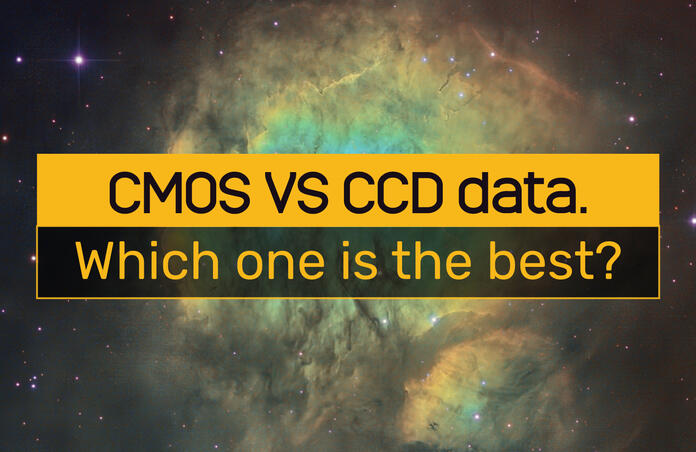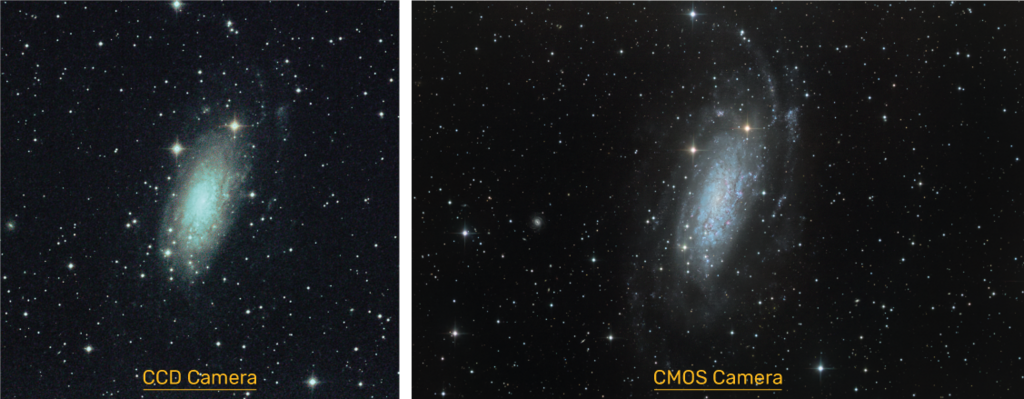CMOS VS CCD data. Which one is the best?

With great pleasure, we announce that the first CMOS datasets are now available for you to download!
We thought that to get you better acquainted with this upgrade to our network, you would find it helpful to have an unbiased comparison between the quality of a CMOS and a CCD dataset.
That's why we've asked our Tutor, Nik Szymanek, to shoot a quick video where he post-processed the new datasets and gave us his opinion comparing the two cameras.
So, in this article, we are going to:
- Analyze the main advantages of the datasets coming from the brand-new CMOS cameras,
- See Nik Szymanek processed datasets,
- And give you an update about the deployment of all the CMOS cameras around the network.
Ready? Let's get cracking!
Nik Szymanek video review
And here’s the final result of the datasets processed by Nik:

The CMOS datasets now available
So, the first datasets collected are those of RCW40 (5 datasets now available) and of NGC3621 (2 datasets now available). Remember that these are discounted by 30% for the first 24 hours - so don’t wait too long because the clock is ticking.
These datasets were collected the past night from CHI1, our telescope from the Chilean observatory in Rio Hurtado Valley.
How CMOS are better than CCD
CMOS (complementary metal-oxide-semiconductor) sensors have become increasingly popular in astrophotography due to their superior performance compared to CCD (charge-coupled device) sensors.
CMOS outclasses CCD in 3 significant ways:
- Quantum efficiency,
- Readout speed,
- And dynamic range.
Quantum efficiency is how well the camera sensor converts the photons it receives from the galaxies into a signal on the sensor. With a higher quantum efficiency, more of these photons are collected and converted into a signal. This means you can image fainter objects as the sensor is much more sensitive to low-light signals.
Secondly to quantum efficiency is CMOS' ability to handle high-speed readout; this means that you can capture images faster. Due to the much lower readout noise when compared to CCD sensors, this allows for imaging with short exposures with little compromise.
CMOS also has the benefit of much smaller pixels on the sensor; this increases the image's resolution, allowing you to capture far more details in your target.
One of the most significant advantages of CMOS sensors is their higher dynamic range. This means that the sensor has a greater ability to distinguish and capture different brightness levels; this is particularly useful in astrophotography, where the contrast between bright and dim objects can be extreme.
To make a comparison, here below, you can see the difference between the NGC3621 datasets taken from the same telescope (CHI 1) with the two different cameras. As you can see from these coloured image previews, the CMOS data (on the right) are vastly superior to those of the CCD (on the left).

An update on the CMOS deployment over the network
CHI 1 is just the first telescope in our network that has been upgraded with the new CMOS camera. However, in the next few days, we will make available also the other telescopes (on which we are still conducting some tests).
SPA 1, 2 and 3 will be next, followed by AUS 2 and USA 1, the new Planewave telescope in New Mexico!



